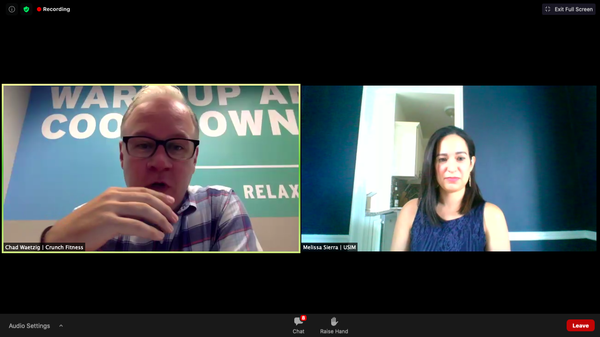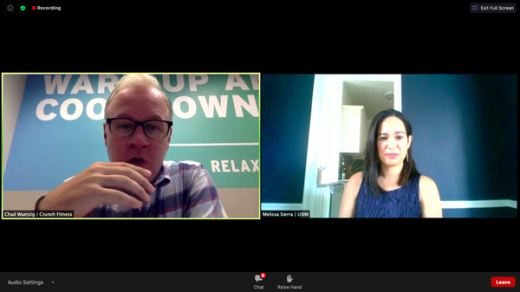Crunching The Map: Crunch Fitness’s Geo-Targeting Workout
Crunching The Map: Crunch Fitness’s Geo-Targeting Workout

Earlier this year, Crunch Fitness was hitting what its head of marketing and branding calls “a really good rhythm. We had things dialed in really well,” Chad Waetzig told our Data & Programmatic Insider Summit on Wednesday. Then COVID-19 hit, and the company was out of business from mid-March through the end of May. Some have since opened to 50% capacity.
Next month, it expects to have almost all 360 locations reopened. But it has had to change its media strategy from one that focused completely on its brand promise of making serious fitness fun to one that highlights safety, security and “what we’re doing to ensure an environment that minimizes any risk of virus transmission.”
A new campaign from USIM will emphasize the reopening with a “Let’s Crunch Again” tagline. Waetzig said Crunch Fitness is aware that different states and communities have different rules. “We recognized our messaging needed to evolve as well.”
The three-pronged creative approach is based on the reopening, the sentiment in the specific community and the positivity rate there. “We want to build back a sense of community but six feet apart,” he said, adding that Crunch has adapted its approach to media spending and the channels it uses.
That means “not just geo-targeting but trying to appeal to the mindset of consumers as we embark on this new world,” said Melissa Sierra, senior vice president, group strategy director at USIM. Crunch will be welcoming back members in appropriate channels, reactivating search and social to enhance the cost per lead generation, and move from getting back to normal to being cautiously optimistic — and then even more normal.
The path is going to be a “prolonged and continued expectation around health, safety and being trusted,” said Waetzig. “Admittedly, our industry hasn’t been the best at that over time. Ultimately, we’ll pivot back to things that are important to us as a society: obesity challenges, access to fitness for everybody in all markets, racial and social justice, what role do brands play, what’s the community sentiment. We are a community partner.”
(26)


